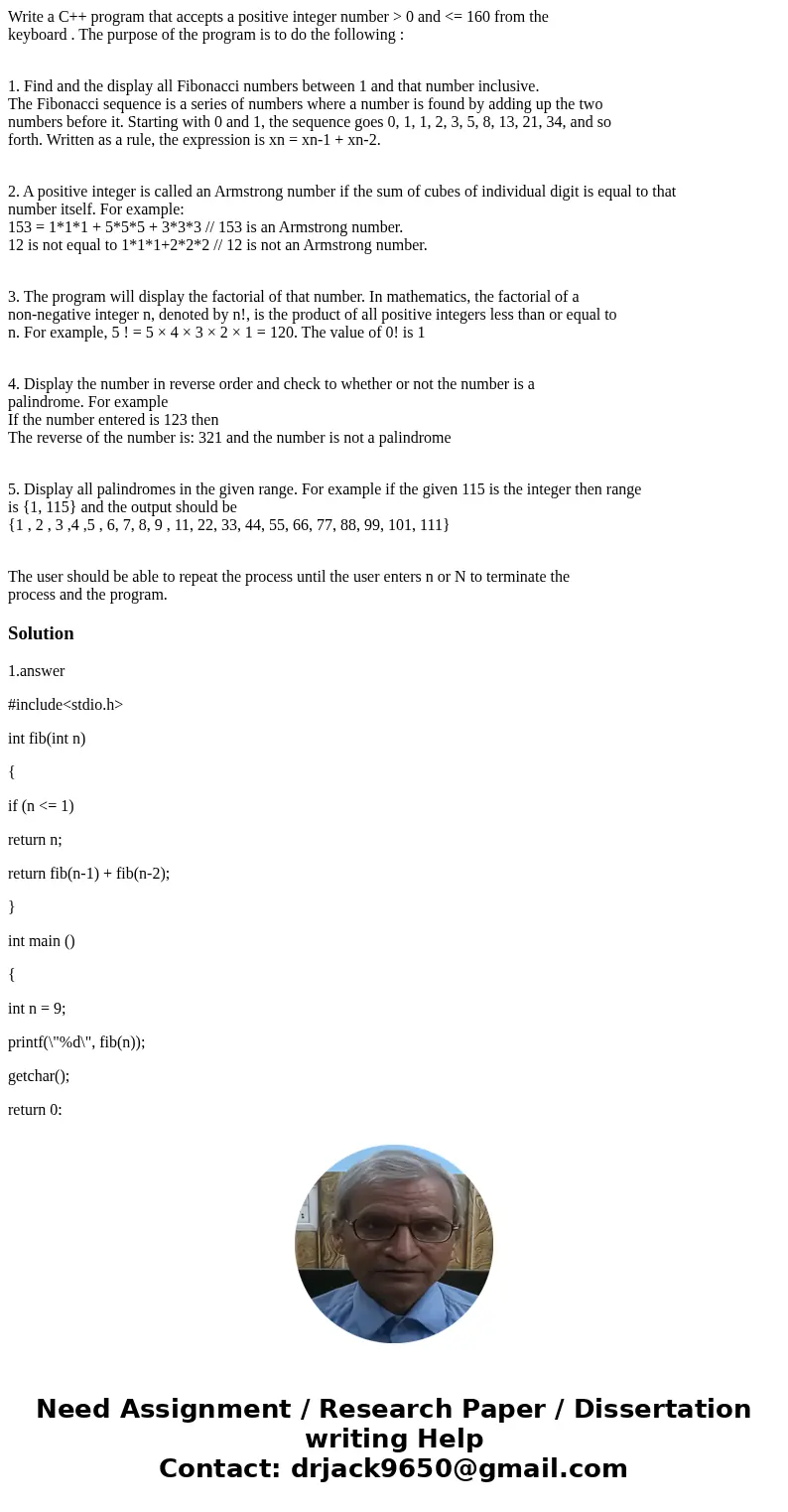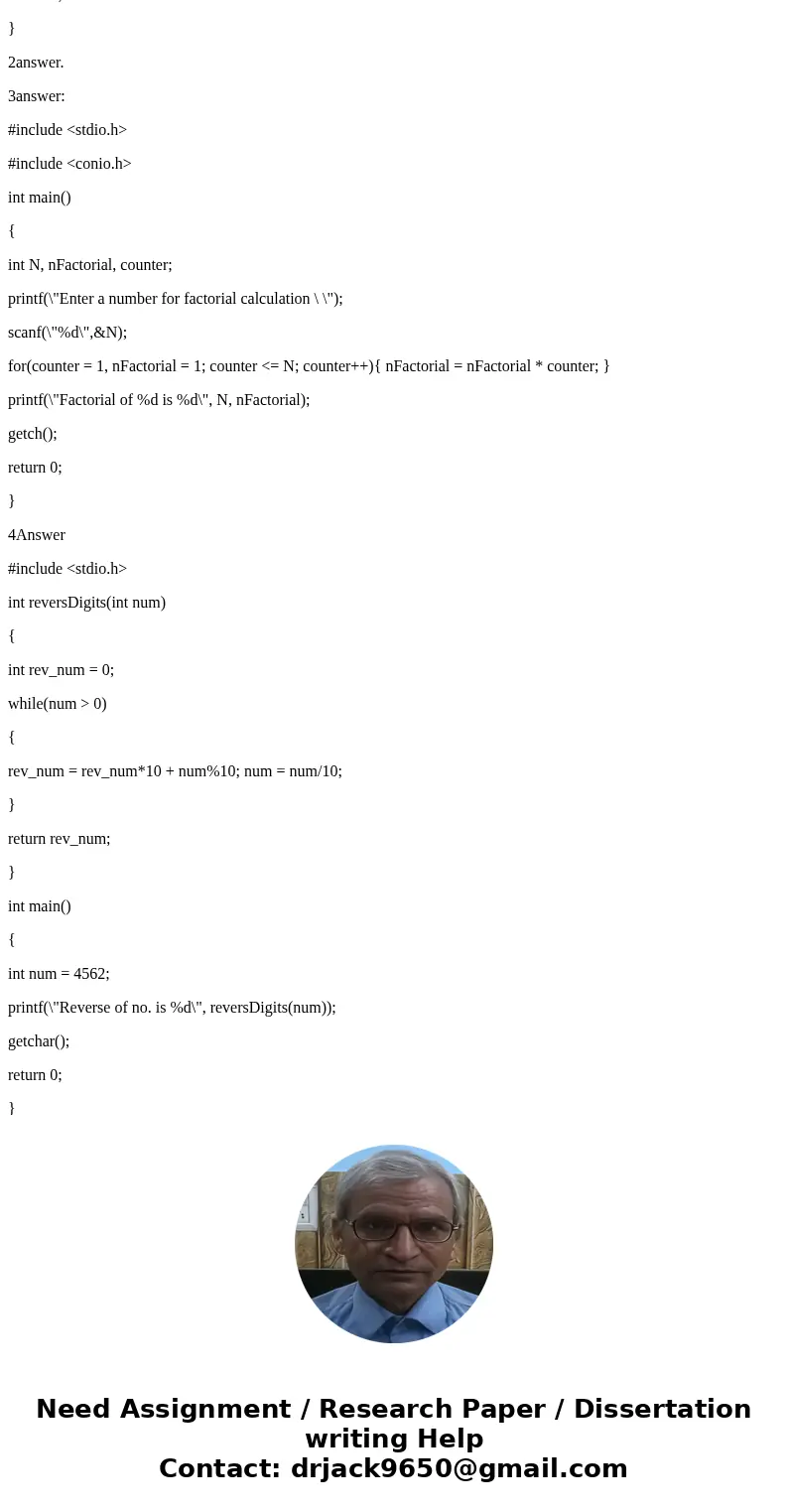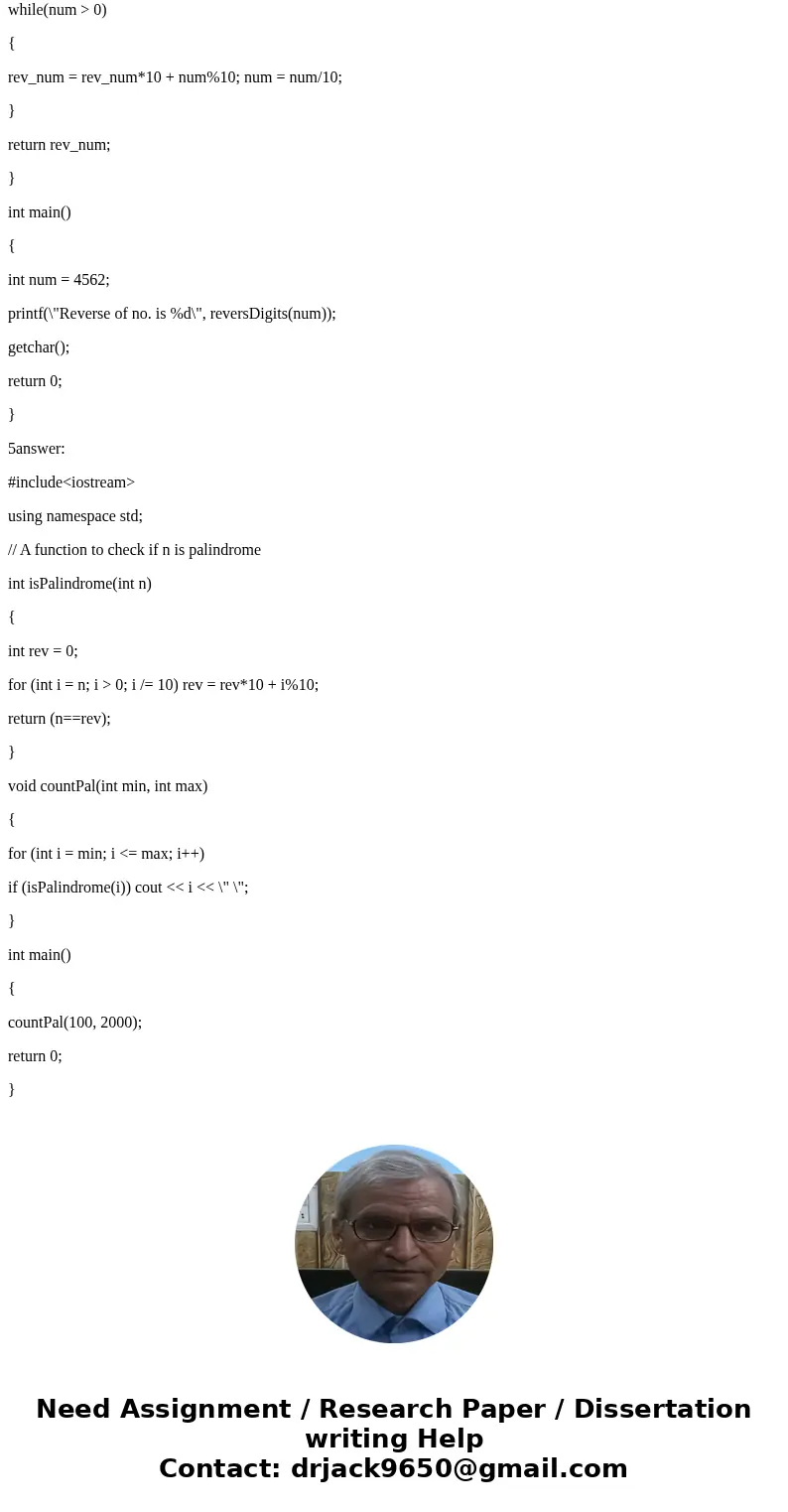Write a C program that accepts a positive integer number 0
Write a C++ program that accepts a positive integer number > 0 and <= 160 from the
keyboard . The purpose of the program is to do the following :
1. Find and the display all Fibonacci numbers between 1 and that number inclusive.
The Fibonacci sequence is a series of numbers where a number is found by adding up the two
numbers before it. Starting with 0 and 1, the sequence goes 0, 1, 1, 2, 3, 5, 8, 13, 21, 34, and so
forth. Written as a rule, the expression is xn = xn-1 + xn-2.
2. A positive integer is called an Armstrong number if the sum of cubes of individual digit is equal to that
number itself. For example:
153 = 1*1*1 + 5*5*5 + 3*3*3 // 153 is an Armstrong number.
12 is not equal to 1*1*1+2*2*2 // 12 is not an Armstrong number.
3. The program will display the factorial of that number. In mathematics, the factorial of a
non-negative integer n, denoted by n!, is the product of all positive integers less than or equal to
n. For example, 5 ! = 5 × 4 × 3 × 2 × 1 = 120. The value of 0! is 1
4. Display the number in reverse order and check to whether or not the number is a
palindrome. For example
If the number entered is 123 then
The reverse of the number is: 321 and the number is not a palindrome
5. Display all palindromes in the given range. For example if the given 115 is the integer then range
is {1, 115} and the output should be
{1 , 2 , 3 ,4 ,5 , 6, 7, 8, 9 , 11, 22, 33, 44, 55, 66, 77, 88, 99, 101, 111}
The user should be able to repeat the process until the user enters n or N to terminate the
process and the program.
Solution
1.answer
#include<stdio.h>
int fib(int n)
{
if (n <= 1)
return n;
return fib(n-1) + fib(n-2);
}
int main ()
{
int n = 9;
printf(\"%d\", fib(n));
getchar();
return 0;
}
2answer.
3answer:
#include <stdio.h>
#include <conio.h>
int main()
{
int N, nFactorial, counter;
printf(\"Enter a number for factorial calculation \ \");
scanf(\"%d\",&N);
for(counter = 1, nFactorial = 1; counter <= N; counter++){ nFactorial = nFactorial * counter; }
printf(\"Factorial of %d is %d\", N, nFactorial);
getch();
return 0;
}
4Answer
#include <stdio.h>
int reversDigits(int num)
{
int rev_num = 0;
while(num > 0)
{
rev_num = rev_num*10 + num%10; num = num/10;
}
return rev_num;
}
int main()
{
int num = 4562;
printf(\"Reverse of no. is %d\", reversDigits(num));
getchar();
return 0;
}
5answer:
#include<iostream>
using namespace std;
// A function to check if n is palindrome
int isPalindrome(int n)
{
int rev = 0;
for (int i = n; i > 0; i /= 10) rev = rev*10 + i%10;
return (n==rev);
}
void countPal(int min, int max)
{
for (int i = min; i <= max; i++)
if (isPalindrome(i)) cout << i << \" \";
}
int main()
{
countPal(100, 2000);
return 0;
}



 Homework Sourse
Homework Sourse